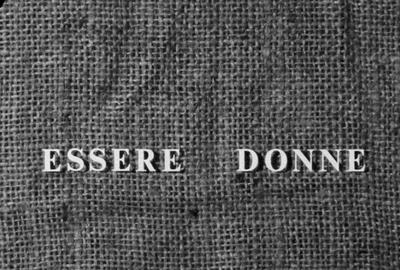Research Questions
Our research is guided by five questions.

1. What were the patterns of feminised labour adopted by the Italian film industry in the years 1945-85?
We want to investigate the specific pattern assumed by feminisation in an industry in which, after its re-establishment under Mussolini in the 1930s, most roles except for screen performance – including some of those considered ‘women’s work’ elsewhere – were filled by men. The re-ordering of gender roles in the phase of corporate expansion that was occasioned in the US by notions of business efficiency and stability, and in the UK by unionisation, occurred under the supervision of the Fascist state. After 1945, greater feminisation of ostensibly routine roles occurred alongside the breakthrough of some women into higher profile jobs. Throughout this period a central role in recruiting and training industry personnel was played by the national film school, the Centro Sperimentale di Cinematografia (CSC). With the cooperation secured from the CSC, the project will access archival records on the recruitment and progression over decades of female students and staff, illuminating the school’s role over several decades in contributing to, reinforcing, or undermining, industry gender norms. The producers and distributors’ association ANICA’s extensive archives will be researched from the perspective of gendered labour, paying attention to the economic treatment of different categories of worker and the role of women in the association itself.
2. What does an investigation of non-mainstream production companies reveal about the presence of women in the sector?
With this question we aim to capture another aspect of what Gaines (2018) refers to as stories of unfulfilled or side-tracked ambition. The Italian phenomenon of many small production companies meant that women could often be found at the head of small, often short-lived enterprises, many of which were located away from the main production centre of Rome and/or were engaged with low-prestige genres. Fragmentation provided career avenues in a context in which access to the upper reaches of production was obstructed. Business records held by the Central State Archive and ANICA will complement testimonies from women who headed companies that operated respectively in the spheres of art film and popular genre production.
3. What role did family networks and personal relationships play in establishing, preserving and sometimes modifying gendered divisions of labour?
This line of inquiry will investigate family specialisations over time and examine how these both facilitated the entry of women and impacted on their careers. Family often determined the avenues open to women but in some cases it functioned as an obstacle to entry or resulted in women being overshadowed or denied recognition. Archival sources and oral testimonies will offer insights into the complex ways in which family played into the nature and quality of female roles, for example, daughters following fathers into the industry, but then also acting to preserve the paternal legacy for posterity.
4. What was the impact of international factors on women’s work in the sector?
We want to explore the impact of the extensive pattern of co-production that characterised Italian film production between the late 1940s and the 1970s. This ensured frequent contacts with the working practices of the French, American and British industries as well as the emergence of new roles and functions to manage multilingual and multi-national collaborations. Attention will be paid to how women benefitted (or otherwise) from these encounters and to the new roles that they acquired as a result of them. Preliminary research suggests that in production, screenwriting and production management women found new opportunities and that, through them, they developed ways of working different from the Italian standard.
5. What role has systematic gender-based discrimination and harassment in the film industry played in the experiences of women, starting from access to the profession to the availability of opportunities and career progression?
In the context of #MeToo and its Italian equivalents, this question will pay attention to sexual harassment and misogynistic behaviour in the industry, phenomena that can be considered as hidden in plain sight. In contrast to other national film industries almost no historical work has been done on the homosocial culture of the Italian film world and its impact on the systematic exclusion of women from certain occupations. Oral testimonies on the topic will be analysed in relation to the wider patterns of power and privilege in the industry that the project will illuminate.